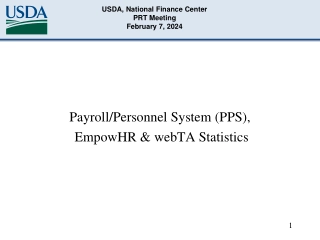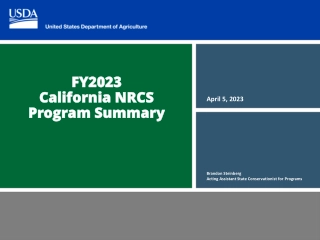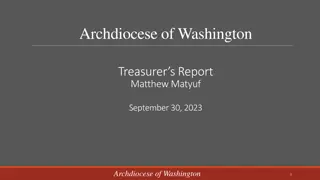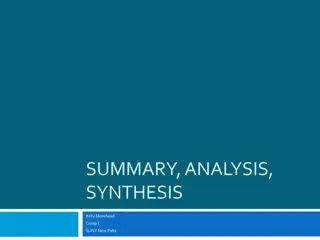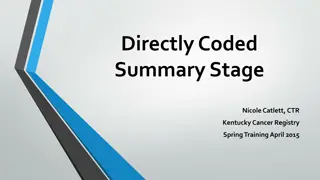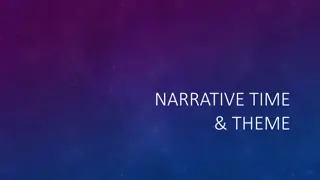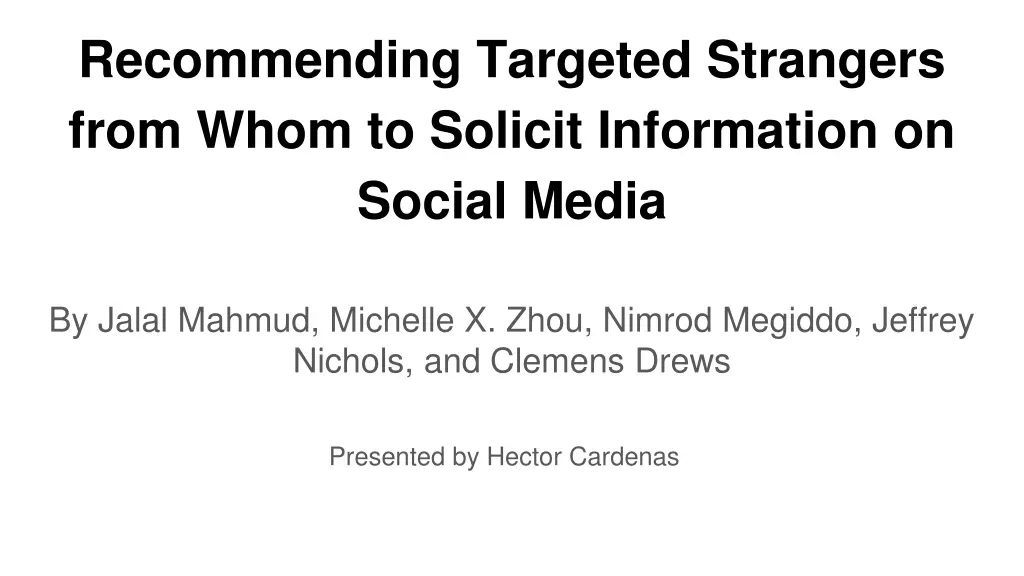
Harnessing Social Media for Real-Time Information Gathering
Explore a cutting-edge approach to soliciting information on social media in real time. Discover how the qCrowd system identifies responsive users and sends targeted questions, backed by statistical models and machine learning algorithms. Overcome challenges like user base skew and privacy concerns while achieving high response rates in live experiments.
Download Presentation

Please find below an Image/Link to download the presentation.
The content on the website is provided AS IS for your information and personal use only. It may not be sold, licensed, or shared on other websites without obtaining consent from the author. If you encounter any issues during the download, it is possible that the publisher has removed the file from their server.
You are allowed to download the files provided on this website for personal or commercial use, subject to the condition that they are used lawfully. All files are the property of their respective owners.
The content on the website is provided AS IS for your information and personal use only. It may not be sold, licensed, or shared on other websites without obtaining consent from the author.
E N D
Presentation Transcript
Recommending Targeted Strangers from Whom to Solicit Information on Social Media By Jalal Mahmud, Michelle X. Zhou, Nimrod Megiddo, Jeffrey Nichols, and Clemens Drews Presented by Hector Cardenas
Objective To collect information from people on social media in real-time qCrowd: finds relevant social media activity, identifies users that are likely to be responsive, and creates and sends questions to some of those users. Focus: Effectively and automatically identify users to ask
Data Collection & Baselines Data collection Manually created three data sets regarding TSA activity and product opinions Baselines Test Rate Asking random strangers response rate 5% Manual response rate 31-42% Humans identifying willingness 38% Humans identifying readiness 58%
Feature Extraction Considerations Responsiveness Profile Personality Activity Readiness Most powerful combination Communication Past Response Rate Tweeting Inactivity Tweeting Likelihood of the Day
Recommendation Algorithm Created a statistical model using SVM and Logistic Regression Recommendation Algorithm Binary classification Ranking by probability Top ranked candidates may not create the highest response rate Use an interval instead
Evaluation SVM Model outperforms logistic regression Recommendation algorithm outperforms baselines and other techniques Recall rates between 46-65% Feature set performed well Showed domain independence Live experiments yielded responses rates of 60-66%
Challenges User base skew Quality of answers Unexpected answers Complex situations Privacy


